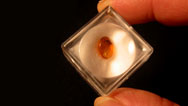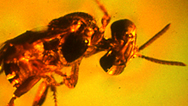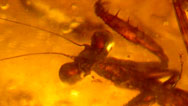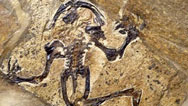Stories in the Amber
- By Peter Tyson
- Posted 02.14.06
- NOVA
Tens of millions of years ago, in a tropical forest on what
today is the Caribbean island of Hispaniola, tiny insects and
other fauna and flora became trapped in resin oozing from a
single species of tree. Over the ensuing eons, some of that
resin transformed into amber, preserving a representative sample
of the primeval forest's denizens. While virtually all of those
species are now extinct, close relatives living today provide
behavioral and ecological clues that help tell stories in the
amber. In this slide show, view a striking sample of
biodiversity discovered in amber from the Dominican Republic,
dated to between 15 and 40 million years ago.
This feature originally appeared on the site for the NOVA
program
Jewel of the Earth.
Sources
Note: All images and information were drawn from
The Amber Forest: A Reconstruction of a Vanished
World, by George Poinar, Jr. and Roberta Poinar (Princeton
University Press, 1999).
Credits
Photos
- (all)
- Courtesy George Poinar, Jr.
Related Links
-

What lies behind fossil-bearing amber's fascination? Hear from
one newly minted aficionado.
-

Trace a bee's journey from its brief life 15 to 20 million
years ago down through the ages within fossil resin.
-

From the Arctic to the tropics, from Mexico to
Myanmar—see the richest sources of fossil amber on
Earth.
-

See the perfectly preserved fossils of feathered dinosaurs and
other creatures that lived 130 million years ago.
Close
You need the Flash Player plug-in to view this content.






